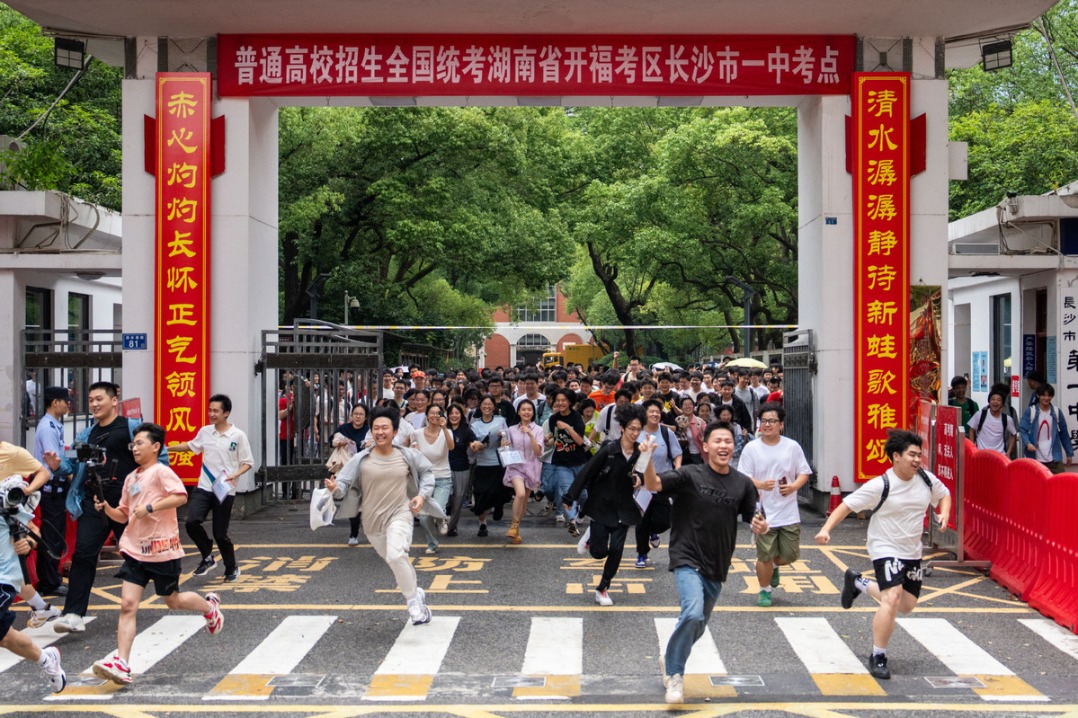China set to build future workforce with new tech-centric college majors

BEIJING -- With the grueling college entrance exams behind them, over 13 million Chinese students will begin exploring university options this year, amid an expanding array of tech-focused study programs.
As China's economy shifts toward high-tech manufacturing and services, new courses are part and parcel of its latest push to ensure the future workforce is equipped with the skills needed to support sustained growth and global competitiveness in an increasingly technology-driven world.
The Ministry of Education has announced the addition of 29 new undergraduate majors across the country's universities, many of them aligned with its strategic priorities in emerging sectors including artificial intelligence, carbon neutrality and low-altitude economy.
One of the new majors is carbon neutrality science and engineering, with graduates likely to support the country's ambitious climate goals of fulfilling its pledge to peak carbon emissions before 2030 and achieve carbon neutrality before 2060.
The low-carbon program at University of Science and Technology Beijing, known for its steel programs, will integrate materials science with metallurgy to facilitate the transition of smoke-heavy traditional industries like steel.
Institutions including Beihang University have designed programs that target China's burgeoning drone and urban air mobility sectors, which hold trillion-yuan (about $140 billion) market potential.
Engineering disciplines like integrated circuits, marine technology, industrial software, intelligent molecular engineering, biomass, and medical device and equipment have also begun enrolling students, closely aligning with China's national industrial development objectives.
To drive digital transformation across consumer industries, China is also planning to cultivate next-generation professionals through new disciplines including intelligent emergency management, smart cities and intelligent imaging art.
"China is essentially predicting what talent it will need five years from now," explained Xiong Bingqi, an education researcher. "These new majors consider three key factors: national strategic development, technological advancement and social needs."
More than 500 universities now offer AI-related majors or have launched dedicated schools related to the field. Tsinghua University and Renmin University of China included AI into their 2025 enrollment expansion plans.
However, some AI programs are affiliated with computer science colleges and lack faculty experienced in AI practice and application.
Zhaopin.com data shows that in the month after the 2025 Spring Festival, AI instructor job postings doubled year-on-year, revealing a severe shortage of AI teaching staff.
Xiong likened some superficial rebranding of existing programs with "smart" or "digital," to "putting on a new coat without changing the essence."
This year, Beijing Normal University will launch a new major in AI education to address the shortage of AI teaching professionals.
China's education authorities have also approved 23 vocational undergraduate institutions, with programs focused technical workforce training for emerging industries, with practical training required to account for 50 percent of total class hours.
Two vocational undergraduate institutions in Anhui, an eastern Chinese province, have set up majors in fields like new energy and intelligent connected vehicles, with a professional alignment rate to regional industries exceeding 90 percent.
China wants vocational undergraduate enrollment to reach at least 10 percent of all higher vocational education admissions by 2025.
- China set to build future workforce with new tech-centric college majors
- China unveils guidelines to deepen reforms in Shenzhen
- Chinese vice-premier meets with foreign guests attending Belt and Road conference
- Residents alerted to stay indoors during typhoon
- Specialized relics rule mandates survey before construction in Shanxi
- Illegal water usage in five areas along Yellow River made public





































